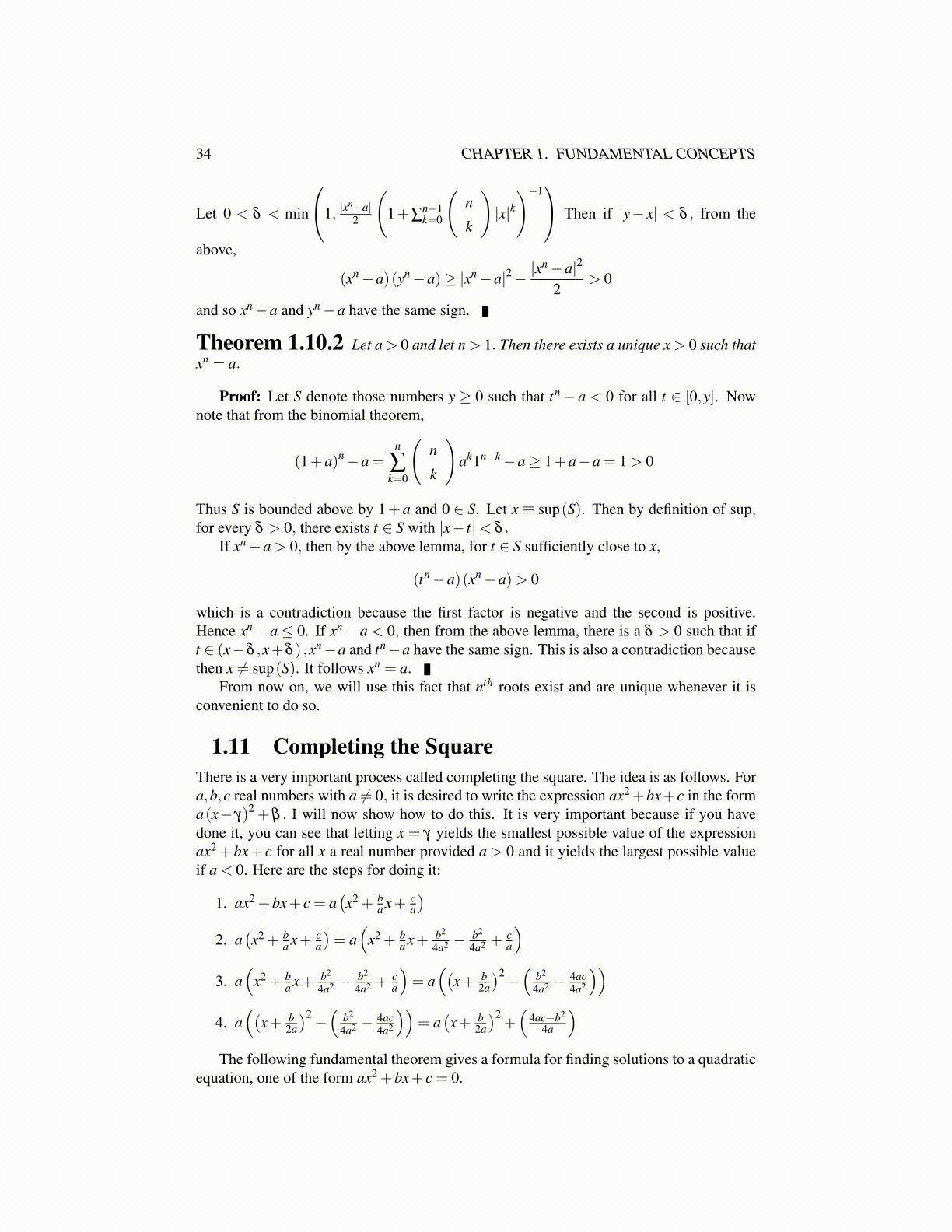
34 CHAPTER 1. FUNDAMENTAL CONCEPTS
Let 0 < δ < min
1, |xn−a|2
(1+∑
n−1k=0
(n
k
)|x|k)−1
Then if |y− x| < δ , from the
above,
(xn −a)(yn −a)≥ |xn −a|2 − |xn −a|2
2> 0
and so xn −a and yn −a have the same sign.
Theorem 1.10.2 Let a > 0 and let n > 1. Then there exists a unique x > 0 such thatxn = a.
Proof: Let S denote those numbers y ≥ 0 such that tn − a < 0 for all t ∈ [0,y]. Nownote that from the binomial theorem,
(1+a)n −a =n
∑k=0
(n
k
)ak1n−k −a ≥ 1+a−a = 1 > 0
Thus S is bounded above by 1+ a and 0 ∈ S. Let x ≡ sup(S). Then by definition of sup,for every δ > 0, there exists t ∈ S with |x− t|< δ .
If xn −a > 0, then by the above lemma, for t ∈ S sufficiently close to x,
(tn −a)(xn −a)> 0
which is a contradiction because the first factor is negative and the second is positive.Hence xn −a ≤ 0. If xn −a < 0, then from the above lemma, there is a δ > 0 such that ift ∈ (x−δ ,x+δ ) ,xn−a and tn−a have the same sign. This is also a contradiction becausethen x ̸= sup(S). It follows xn = a.
From now on, we will use this fact that nth roots exist and are unique whenever it isconvenient to do so.
1.11 Completing the SquareThere is a very important process called completing the square. The idea is as follows. Fora,b,c real numbers with a ̸= 0, it is desired to write the expression ax2 +bx+c in the forma(x− γ)2 + β . I will now show how to do this. It is very important because if you havedone it, you can see that letting x = γ yields the smallest possible value of the expressionax2 +bx+ c for all x a real number provided a > 0 and it yields the largest possible valueif a < 0. Here are the steps for doing it:
1. ax2 +bx+ c = a(x2 + b
a x+ ca
)2. a
(x2 + b
a x+ ca
)= a
(x2 + b
a x+ b2
4a2 − b2
4a2 +ca
)3. a
(x2 + b
a x+ b2
4a2 − b2
4a2 +ca
)= a
((x+ b
2a
)2 −(
b2
4a2 − 4ac4a2
))4. a
((x+ b
2a
)2 −(
b2
4a2 − 4ac4a2
))= a
(x+ b
2a
)2+(
4ac−b2
4a
)The following fundamental theorem gives a formula for finding solutions to a quadratic
equation, one of the form ax2 +bx+ c = 0.